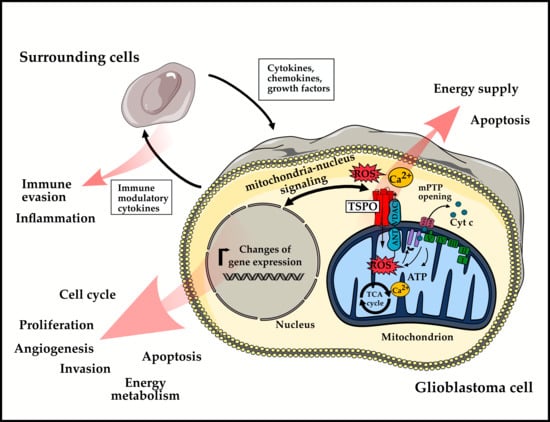Share and Cite
Ammer, L.-M.; Vollmann-Zwerenz, A.; Ruf, V.; Wetzel, C.H.; Riemenschneider, M.J.; Albert, N.L.; Beckhove, P.; Hau, P. The Role of Translocator Protein TSPO in Hallmarks of Glioblastoma. Cancers 2020, 12, 2973. https://doi.org/10.3390/cancers12102973
Ammer L-M, Vollmann-Zwerenz A, Ruf V, Wetzel CH, Riemenschneider MJ, Albert NL, Beckhove P, Hau P. The Role of Translocator Protein TSPO in Hallmarks of Glioblastoma. Cancers. 2020; 12(10):2973. https://doi.org/10.3390/cancers12102973
Chicago/Turabian StyleAmmer, Laura-Marie, Arabel Vollmann-Zwerenz, Viktoria Ruf, Christian H. Wetzel, Markus J. Riemenschneider, Nathalie L. Albert, Philipp Beckhove, and Peter Hau. 2020. "The Role of Translocator Protein TSPO in Hallmarks of Glioblastoma" Cancers 12, no. 10: 2973. https://doi.org/10.3390/cancers12102973
APA StyleAmmer, L.-M., Vollmann-Zwerenz, A., Ruf, V., Wetzel, C. H., Riemenschneider, M. J., Albert, N. L., Beckhove, P., & Hau, P. (2020). The Role of Translocator Protein TSPO in Hallmarks of Glioblastoma. Cancers, 12(10), 2973. https://doi.org/10.3390/cancers12102973






